Lawn & Garden Retailer Headlines
By John R. Holmes, CAE
Have you visited www.ofa.org recently? If you haven’t been surfing lately, visit our site soon, and see what’s there for you. This page features information about association activities and links to the industry, and it’s been recently redesigned to be an even better resource about OFA.
The Web site, www.ofa.org, is a great place to get to know OFA better and connect with others in the industry. You can start with a review of our history, past presidents, executive committee and board members, plus current committee members who have contributed their thoughts and skills to making OFA a truly member-driven organization.
Upcoming events are listed from the OFA Short Course to our outreach programs and board/committee meetings. A special Short Course section highlights educational session topics, the trade show, exhibitors and sponsorship opportunities. In late April, you’ll be able to register for Short Course, make your hotel reservations and preview the 2005 program online.
You can also access many OFA partners from www.ofa.org. Add Florists’ Review magazine to your reading list; see if the APPI energy savings program can help you; reference the Green Industry Yellow Pages; and connect to universities and other industry organizations. You can even update your library via the OFA Bookstore with OFA and other titles discounted for OFA members. Of course, you can join OFA with our online membership application, even dues renewal. The “Members Only” section features a searchable directory of all OFA members and archives of the OFA Bulletin. Other members can be located by company name, last name or city. You can also view and update your own member profile. To reach this section, use your member ID number (on your membership card or bulletin label) and your password (first letter of first name and last name).
The Flower Fields Alliance Splits
The Flower Fields has announced several changes to The Flower Fields Alliance structure and brand strategy. While The Flower Fields continues as an association of companies working together to meet the needs of its customers, due to marketing and organizational changes, Fischer USA and Goldsmith Seeds will no longer be formal members of The Flower Fields Alliance nor offer products under The Flower Fields brand effective with the new fiscal year, April 1, 2005.
“We have responded to changes in market demands by reducing emphasis on retail brand development and shifting our focus to our business-to-business efforts to create solutions that use the products and resources of the companies in a greater variety of ways,” said Tom Doak of Yoder Brothers who serves as chair of The Flower Fields Alliance. “All four companies are committed to continuing our primary efforts to develop and bring to market new and improved varieties.”
“Fischer will be focusing on the products coming from the combined breeding programs of Fischer and vegetative products from Goldsmith Seeds, marketed under the Goldfisch label which is a grower program and not a retail brand,” said Gary Falkenstein, co-president, Fischer USA.
“For us it was the logical business decision since we’re no longer in vegetative,” said Joel Goldsmith, president of Goldsmith Seeds. “We intend to continue our personal and professional relationships with one another on an informal basis rather than part of a marketing alliance.”
By way of example, according to Paul Ecke, CEO of Ecke Ranch, Ecke will be offering a plug program using Goldsmith genetics. “Our goal is to offer integrated plug and cutting order fulfillment and prefinished programs that include both seed plugs and vegetative materials tailored to individual grower needs,” said Ecke.
According to the four companies, the fundamental operational relationships of The Flower Fields that led to easing the ordering and fulfillment process continue to be in place for growers. “The Flower Fields has always offered flexibility, and flexibility requires permitting selection of suppliers, product combinations, product forms and the programs, or brand identification requested by the retailer or grower,” said Ecke. “Ecke and Yoder will continue to offer The Flower Fields tags, pots and other programs for use consistent with our customer needs.”
Due to the organizational and strategic changes, the companies will not be offering P. Allen Smith’s Garden Home Collection as a retail program in 2005. “Allen is the nation’s leading voice to the home gardener and has helped build The Flower Fields brand at all levels, which helps us as we transition to our B-to-B strategy,” said Ron Garofalo, The Flower Fields marketing director. “I’ve enjoyed working with The Flower Fields,” said P. Allen Smith. “My focus remains on reaching out to home gardeners, and I will be working with other sources for my collection in several garden and home related categories.”
The broad and comprehensive range of products offered by all four companies continues and will be on display at the Spring Trials 2005 combined Pack Trials at the Goldsmith facility in Gilroy, Calif. For information regarding the trials, visit www.theflowerfields.com or contact [email protected].
SOD Update: SOD Order Protects Industry
On January 10, a revised USDA order took effect as the latest step toward ensuring clean, disease-free nursery plants in the U.S. market. The order strengthens safeguards for the fungus-like plant disease Phytophthora ramorum, commonly known as Sudden Oak Death (SOD).
In brief, the order requires expanded inspection and/or testing for most nurseries shipping plant materials interstate from California, Oregon or Washington. “USDA and its state cooperators are strengthening surveillance and protective measures for P. ramorum,” said Craig Regelbrugge, senior director of government relations with the American Nursery & Landscape Association (ANLA).
With much inspection and testing work already done, and more underway, the order is not expected to seriously disrupt either the supply or price of plant material this spring. “There will be added burdens and some potential delays for some nurseries, but USDA and the states are taking proactive steps to minimize delays,” Regelbrugge added. Lining up additional diagnostic labs for plant sample testing is one such measure, he said.
For the short term, the USDA order is the next step in the U.S. response to this disease, with further modifications as knowledge is gained. “We have so much to learn about this disease,” said Marc Teffeau, director of research with the Horticultural Research Institute (HRI). Teffeau said that a major research effort has been underway since 2002, with HRI and USDA’s Agricultural Research Service and a number of universities working to answer research questions important to U.S. horticultural industries. Regelbrugge said that the arrival and establishment in the United States of serious plant pests and diseases is inevitable in the global economy, with expanding travel and trade. “We must improve our prevention, detection and rapid response capabilities to keep the next P. ramorum from getting to the U.S. in the first place. Once here, we need to learn how to live with it, how to manage it” he said. For more details on the USDA revised order, visit www.anla.org.
New SOD Enters the U.S.
“A previously unknown strain of the tree-killing disease Phytophthora ramorum, more commonly known as sudden oak death (SOD), has been found in a nursery in Washington state, a possible mutant child of the fast-spreading pathogen,” asserted a recent article in the San Francisco Chronicle.
According to the article, this new strain is a combination of two different types of Phytophthora: the version we have here in the United States and a more aggressive version from Europe. The article states that this new strain may possibly be the offspring of the two versions mixing together; however, at this point, scientists have not been able to officially prove that as the case.
“‘We detected a third strain with traits from both the U.S. and European strains,’ said UC Berkeley forest pathologist Matteo Garbelotto during a three-day Sudden Oak Death Science Symposium in Monterey. ‘It has some genetic traits in the DNA that we’ve never seen. It’s a unique strain,'” he stated in the article.
“‘The obvious risk,’ said Jonathan Jones, who manages the sudden oak death program for the U.S. Department of Agriculture’s Animal and Plant Health Inspection Service, ‘is that there could be sexual recombination, and we could end up with something worse than what we have,'” the article continued.
According to the Chronicle, the new strain was found this past summer on a plant in a nursery where both the American and European strains were known to exist. Though different strains, this is the equivalent of a male and female of the same species and may have led to the intermingling.
“The European strain has been deadly to England’s ubiquitous rhododendrons and beech trees, but it wasn’t until 2003 that it was detected in a nursery in British Columbia. It has since been found in nurseries in Oregon and Washington,” explained the article. “‘One hypothesis is that it is the result of recombination,’ Garbelotto said. ‘The other hypothesis is that it’s a representative of the species that predates the split between the European and U.S. mating types, and it was introduced separately. It’s interesting because it offers us another clue into the origin of this Phytophthora species. Maybe we can find out where this plant came from and trace the disease back.'”
In addition to this new strain emerging in the states, the American Nursery & Landscape Association (ANLA) is reporting a new form of Phytophthora has been found in England. The Á current proposed name is Phytophthora kernovii. According to the ANLA Update, this new pathogen seems to be much more aggressive than Phytophthora ramorum and also seems to have a broader host range. “Some English scientists suspect that the disease may have come from China on magnolia,” said the Update. ANLA is recommending that U.S. nurseries importing plant material from Europe or Asia should be very careful and check for signs of disease right away. According to the Chronicle, “‘The disease itself seems to be progressing more rapidly than ramorum,’ said Stephen Hunter, head of plant health for the Department for Environmental Food and Rural Affairs in Britain. ‘There is a lot of concern.'”
KNLA, TNLA and SNA Announce Trade Show
Three horticultural associations the Kentucky Nursery & Landscape Association (KNLA), the Tennessee Nursery & Landscape Association (TNLA) and the Southern Nursery Association (SNA) have joined together to form a new regional winter trade show, which will open January 5-6, 2006 in Louisville, Ky. This new event, the Mid-States Horticultural Expo (MSHE), is the result of combining the KNLA winter trade show and the TNLA summer trade show to form a regional event for the Mid-South. MSHE will be held at the Kentucky Fair & Exposition Center, which is more commonly known as the Kentucky Fairgrounds. One of the top 10 largest public facilities of its kind in the United States, this expo center features a 400-acre property that offers more than 1,000,000 sq.ft. of indoor space. The center is currently expanding the South Wing, which will house MSHE. The project is expected to be complete by October 2005.
This new combined trade show is the result of a study that began in 1994 by SNA and many of its participating state associations. The study later produced the work that brought the Gulf States Horticultural Expo together in 1999, consolidating the trade shows of the Alabama Nursery & Landscape Association with the Louisiana Nursery and Landscape Association and the Mississippi Nursery and Landscape Assoc-iation. Both Gulf States and the Mid-Atlantic Nursery Trade Show (MANTS) were studied while developing Mid-States. Strategies are being developed to co-promote these shows, offering greater promotional exposure while coordinating schedules for our industry members. For more information on MSHE, contact the Southern Nursery Association, call (770) 953-3311 or visit www.sna.org.
SoilSoup Receives Research Grant
SoilSoup, Inc. is one of 12 companies to receive grants from Washington Technology Center (WTC). More than $657,000 has been awarded for technology commercialization projects across Washington State.
WTC’s Research & Technology Development (RTD) grants program awards more than $1 million annually to university researchers teamed with technology companies on projects that show potential for commercial success.
The award recipients represent businesses all across Washington State, with research support provided by three of the state’s major academic institutions: University of Washington, Washington State University and Central Washington University. The financing assistance provided by these awards is designed to help companies looking to develop innovative new products to get the support necessary to conduct critical research and development studies.
SoilSoup along with Lynne Carpenter-Boggs from the Department of Crop and Soil Sciences at Washington State University will be working on biotechnology solutions for increasing the life of liquid compost (compost tea).
SoilSoup currently has patented aerobic compost tea brewing equipment that makes a fresh liquid compost tea. In this project, the company hopes to develop other versions of its existing products.
Traveling Through January
As we all know, January is one of the biggest trade show months of the year, and there is no possible way to attend all of them. The Lawn & Garden Retailer editors were able to travel to some events and thought we would share some of our sightings to help those of you who were unable to go to all of the shows this year. One show we attended that is not mentioned below is the National Retail Federation’s annual conference called the Big Show. For a summary about that see Editorial Director Bridget White’s “Editor’s Report” in the February issue of Lawn & Garden Retailer.
AmericasMart Atlanta
In the beginning of January, I took the trip to AmericasMart Atlanta to see all of the new trends and learn about all of the exciting new products that have come into the market for 2005. This event consists of three buildings full of gifts, apparel, Christmas décor, garden décor, gourmet food and so much more. This year was even more exciting. Because of all of the new things garden centers have been doing and all of the different product categories they have been adding, I needed to expand on the floors that I have visited in the past.
Many of the trends I saw were major extensions of last year, meaning a lot more bright colors. However, there were some pretty interesting things I saw for new trends in 2005 that were a little surprising. One thing that is pretty hot right now is the peacock theme, meaning not only the bird itself but the rich purples, greens, aquas, blues and golds, as well as feather designs, as part of gift décor. Strange right, that’s what I thought. There were figurines, wall hangings, etc. the showrooms were just bursting at the seams to sell feathered products; heck, Nicole Kidman was even wearing peacock feathers on her dress at the Golden Globe awards in January, so you know that there has to be some truth to the rumor right?
The Red Hat Society and tropical items were other large focal points. I don’t have to tell you that though, because so many of your garden centers that I have visited have been on the Red Hat Society train, and it is working, hence the reason so many manufacturers are offering that theme right now. There were so many items with purple and red themes, you could open up a store just to cater to these classy ladies.
The tropical theme is fun and exciting to look at. The Hawaiian aspect, with hula dancers, large flower prints and more is quite popular. A subset of Hawaiian is the beach theme, which has hit it pretty big with the new flip flop and sunglass craze that has moved into figurines, frames and more.
There were tons more themes to talk about, but if you want more, you are just going to have to read my column, “Market Watch,” every month (see page 14). All in all, visiting the Mart was a great learning experience and one that people should check out themselves every year. I want to thank AmericasMart for the wonderful show and all of the great Southern hospitality they offered. For more information on the show visit www.americamart.com. <
Catherine Evans
TPIE/GCA
We take a trip to Florida at the end of January every year isn’t it a shame that I had to go from Chicago to Ft. Lauderdale in the middle of winter, during Chicago’s biggest snow storm of the season? While in the sunshine state, we get to knock out two events in one trip Garden Centers of America’s (GCA) National Conference of Independent Garden Centers and the Tropical Plant Industry Exhibition (TPIE) held by the Florida Nursery, Growers & Landscape Association (FNGLA).
GCA. The first event was GCA’s National Conference of Independent Garden Centers, which began the evening of Jan. 18, 2005 with a reception. The next morning attendees were up bright and early for a day of production tours. On the schedule were Harold B. Martin Nursery, Miami; Kerry’s Bromeliads Nursery, Homestead; Farm Life Tropical Foliage, Homestead; and Tony Costa Nursery, Goulds. The attendees were buzzing with how unusual this tour was, since it was not a garden center tour. Since many retailers are also growers, it was very helpful to see large-scale production and where many of their bought-in live goods come from. Attendees were able to see plants they weren’t familiar with due to their location; many attendees didn’t hail from Florida some quite the opposite, from Michigan to Maryland.
Then it was on to the days of seminars (some held in conjunction with TPIE) one day that was very well received included seminars on destination garden centers, the future of garden center structures, marketing and branding trends that will affect your business, and radio frequency identification’s impact on retailing. This was also a significant moment for GCA as they introduced their new president, John Trax. The only complaint I overheard about this day was that there was not enough time to take in all of this useful information. Attendees were then able to venture over to TPIE to enjoy the show. Thank you to the GCA for a fun and educational time.
TPIE. Not since the IPM, International Trade Fair for Plants in Essen, Germany, have I seen booths so colorful and unique. Even an industry friend said to me at TPIE, “It’s like Essen; all they need are grills going and kitchens in their booths,” which is typical at European trade shows. But, this show is definitely about more than booths TPIE drew nearly 8,500 attendees and offered an extensive showcase of foliage products and plant accessories, as well as three days of educational programs and nursery tours through the TPIE Short Course. This show is a must for anyone who has a foliage department, while it also covers other segments of the retail business, from a group of retailers speaking on loyalty programs to consultants speaking on organic products and sales techniques.
One item I found myself talking about with exhibitors as well as attendees is pay-by-scan. With Home Depot deciding to implement pay-by-scan this coming spring may not affect you just yet, it was still something folks wanted to talk about. It helped to have Stan Pohmer with me while we walked, so he could get his two cents in, which by the way, are usually close to brilliant.
I know you’re waiting to hear about the trends I saw at the trade show; well, here it is color, especially orchids and bromeliads. These were abundant and the best I’ve ever seen. They know how to do it down there. Orchids have been gaining popularity over the years, and bromeliads are getting there something to look out for. Another thanks goes out to FNGLA.
Carrie Burns
Requests For The “Plants At Work” Message
Plants at Work, the foliage industry’s educational initiative developed to expand the size and profitability of the interior plant trade, has seen its consistent strategies to create a significant rise in overall interest in the human and environmental benefits of interior plants finally start to pay off.
The campaign celebrates a significant message buy-in from Madison Avenue, touting interior plants as the differentiating factor for added value. According to Bacons Media Monitoring the “plant benefit” core message hit a sharp saturation increase with both professional trades and consumer media outlets through the last quarter. With many news outlets syndicating the message, the Plants at Work Web site server is reporting a steady pick up of activity over the last several months with January already recording a four-year high in unique qualified visitors to the site, according to Plants at Work.
In addition to securing editorial coverage the campaign includes presentations and a presence at national target events and conferences; the dissemination of a 16-page booklet published by the campaign to further quantify the benefits of interior plants; an informational Web site (www.plantsatwork.org) with professional interiorscape providers listed geographically. The campaign also provides foliage industry business owners with a menu of customizable local action marketing and sales tools.
Under the volunteer direction of McRae Anderson, of St. Paul’s McCaren designs, the campaign’s budget of approximately $175,000 per year is funded 100 percent by pledges from independent companies within the foliage industry and is administrated through PLANET (The Professional Landcare Network).

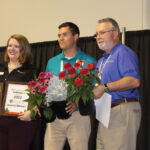




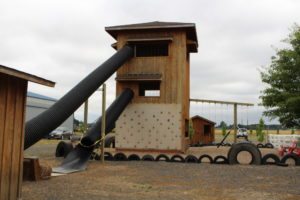
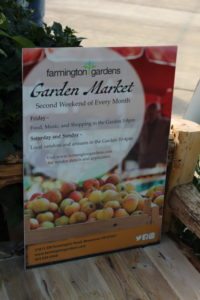
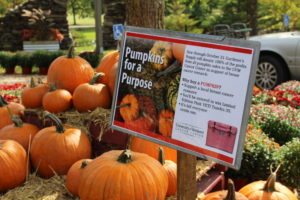
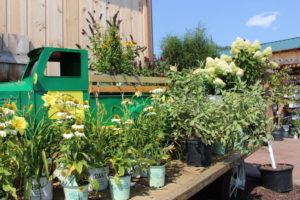


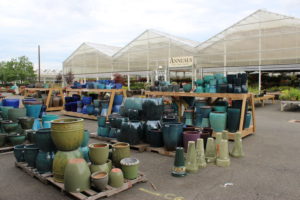
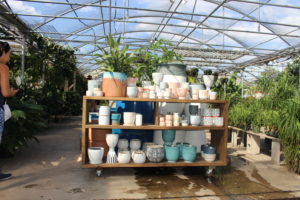
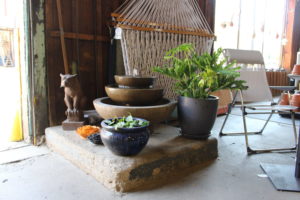
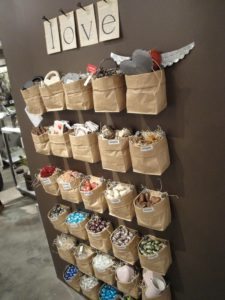
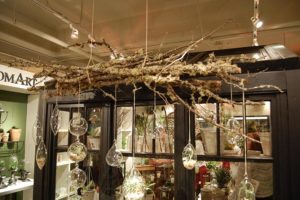
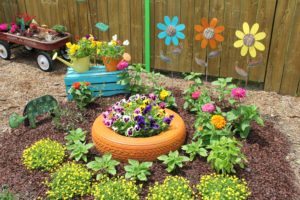
 Videos
Videos





